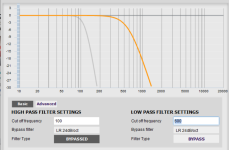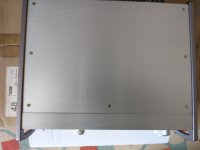Hi all...
I guess there are lots of threads dealing with mini dsp and REW. I got a umik-1 measurement microphone about 2 years back. But REW was always Greek and Latin to me. So after an initial tryst, I never bothered about either.
So in order to go active biamping as well as adress room nodes which were driving me crazy, I decided to give the Dayton dsp 408 a spin. Which at only USD 150/-, was also the cheapest and easiest around.
Despite being completely dumb at crossovers and room Eq, two things that gave me confidence were :
1) It has a easy windows based desktop app, that enables one to change settings on the fly in real time, as long as it is plugged via usb into the laptop
2) It has 8 channels of outputs, and provides 10 point parametric Eq on each channel. Each Eq point allows "Q" value and "gain" setting per each Eq point.
That was the easy part. Normally most folks would measure their room and apply Eq to try to cancel the peaks and leave the troughs alone.
Since I didn't want to dabble in REW again, I used a simpler method. I used online room mode calculators, and fed in my rooms exact dimensions till the last CM.
http://www.mcsquared.com/modecalc.htm
Below are the two room mode tables I got from the above online calculators. Then as can be seen in the attached paper pic below, I listed down all these frequencies, and marked those frequencies that were repeating in both tables.
Next I applied eq uniformly of -3db, at all these room mode frequencies. Or where these frequencies were differing by 5 Hz, I took the center average. For "Q" value, as can be seen I've kept it uniform at 3.997 to keep it narrow, as I read room nodes are very narrow, and usually only 5 Hz wide.
I also forgot to mention that I also split the frequencies to the bass driver being driven by the krell till 600 Hz. And mids and treble being driven by tube amp below 200hz. All with the available linkwitz riley 24db per octave slope cross overs.
The result it the best sound I've ever had in my room. It is sounding bloody marvellous now. Absolutely no bass boom.or bloat. The mid rnage , vocal clarity and treble have really opened up. The improvement is so promising , that the addition of some absorbers at first reflection points should take the system to another level. So Iam really over the cloud now.
I know this is not the most scientific way of doing Eq. But if some one has been wanting to give it a try, but hesitant like me. Then I fondly hope they find my post useful.
Another important thing was that I had my doubts if adding a cheap dsp in the chain would add unwanted noise. But I got a ifi ipower ultra quiet 12v psu for powering the Dayton, instead of using its supplied LPSU. And I find the back ground pitch dark. I have actually removed the preamp from the chain , and feeding the Dayton directly from esoteric via its inbuilt volume control. And the music now emanates from the darkest , most noiseless background ive ever had. And the dynamics are off the charts too
Thanks for reading my long rant
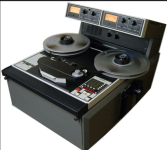
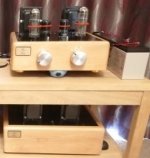
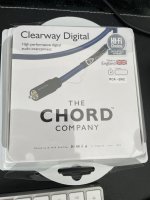
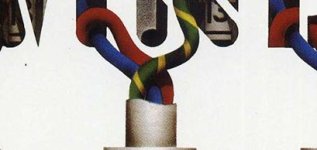
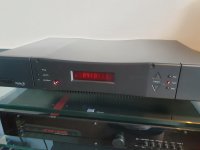
I guess there are lots of threads dealing with mini dsp and REW. I got a umik-1 measurement microphone about 2 years back. But REW was always Greek and Latin to me. So after an initial tryst, I never bothered about either.
So in order to go active biamping as well as adress room nodes which were driving me crazy, I decided to give the Dayton dsp 408 a spin. Which at only USD 150/-, was also the cheapest and easiest around.
Despite being completely dumb at crossovers and room Eq, two things that gave me confidence were :
1) It has a easy windows based desktop app, that enables one to change settings on the fly in real time, as long as it is plugged via usb into the laptop
2) It has 8 channels of outputs, and provides 10 point parametric Eq on each channel. Each Eq point allows "Q" value and "gain" setting per each Eq point.
That was the easy part. Normally most folks would measure their room and apply Eq to try to cancel the peaks and leave the troughs alone.
Since I didn't want to dabble in REW again, I used a simpler method. I used online room mode calculators, and fed in my rooms exact dimensions till the last CM.
http://www.mcsquared.com/modecalc.htm
Below are the two room mode tables I got from the above online calculators. Then as can be seen in the attached paper pic below, I listed down all these frequencies, and marked those frequencies that were repeating in both tables.
Next I applied eq uniformly of -3db, at all these room mode frequencies. Or where these frequencies were differing by 5 Hz, I took the center average. For "Q" value, as can be seen I've kept it uniform at 3.997 to keep it narrow, as I read room nodes are very narrow, and usually only 5 Hz wide.
I also forgot to mention that I also split the frequencies to the bass driver being driven by the krell till 600 Hz. And mids and treble being driven by tube amp below 200hz. All with the available linkwitz riley 24db per octave slope cross overs.
The result it the best sound I've ever had in my room. It is sounding bloody marvellous now. Absolutely no bass boom.or bloat. The mid rnage , vocal clarity and treble have really opened up. The improvement is so promising , that the addition of some absorbers at first reflection points should take the system to another level. So Iam really over the cloud now.
I know this is not the most scientific way of doing Eq. But if some one has been wanting to give it a try, but hesitant like me. Then I fondly hope they find my post useful.
Another important thing was that I had my doubts if adding a cheap dsp in the chain would add unwanted noise. But I got a ifi ipower ultra quiet 12v psu for powering the Dayton, instead of using its supplied LPSU. And I find the back ground pitch dark. I have actually removed the preamp from the chain , and feeding the Dayton directly from esoteric via its inbuilt volume control. And the music now emanates from the darkest , most noiseless background ive ever had. And the dynamics are off the charts too
Thanks for reading my long rant





Last edited by a moderator:



